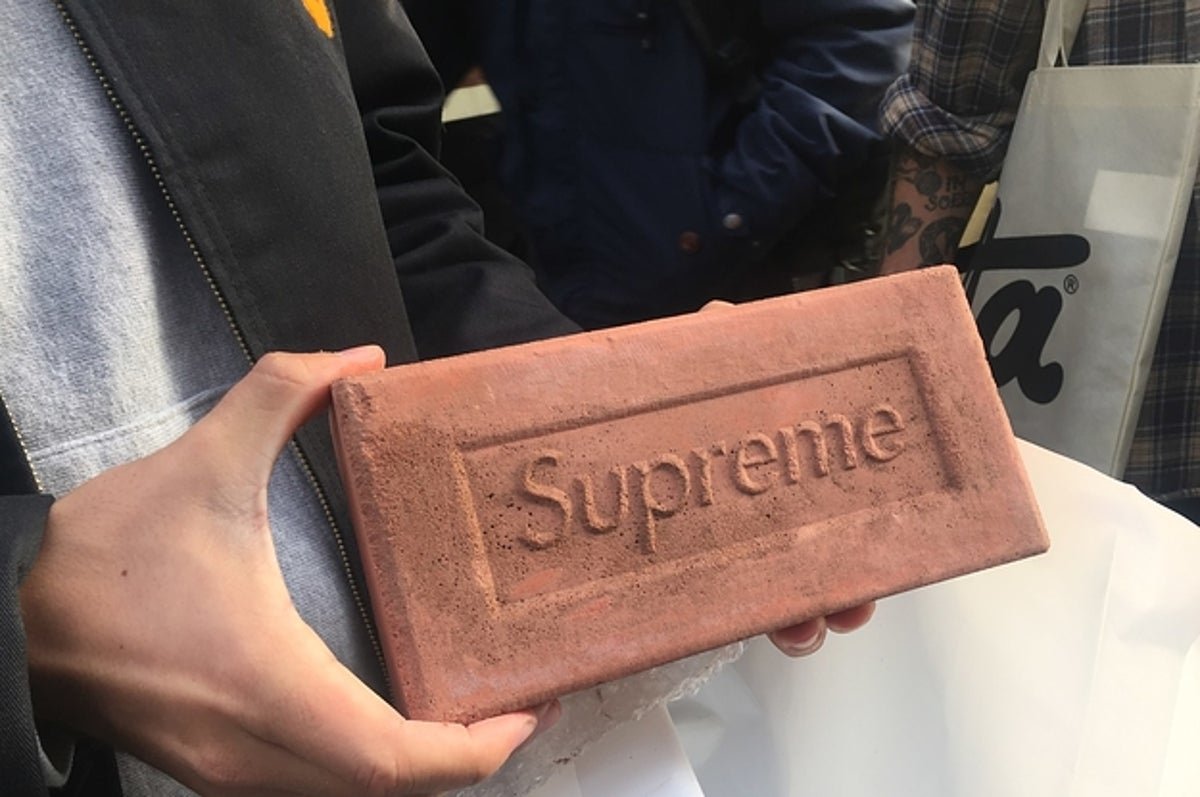
there should be tampons on hypebeast
Mara Dettmann
28/02/2019
Hype creates inordinate value. If a brick can have a resale value of $1,000, why don’t we apply the principles of hype culture to more products? asks Mara Dettmann, Editor at BBH London
There’s something inherently magical about working in advertising: at the core of it, it’s our job to create value – at times seemingly from nothing.
At the moment, few brands do this as impactfully (or at least as prominently) as streetwear sensation Supreme. I’d seen the lines outside the store – hard to miss in Soho – but didn’t realize the scale of it until I watched Hasan Minhaj’s overview of the phenomenon.
In a nutshell: while there’s buzz and demand around a fair few streetwear brands, Supreme operates on an entirely different level. T-shirts originally sold for $48 are quickly listed at a resale price of $150; the notorious Supreme brick, which initially retailed at $30, was being resold at $1,000 at one point and can now be bought for a much more reasonable ~$140. (No need for bricks? There’s also a Supreme crowbar.) The company itself is valued at $1 billion and offered so much potential that the Carlyle Group (a hardcore asset manager) bought half of it.
Our late 2010s iteration of hype thrives on digital. Social media plays a huge role in teasing and announcing new products and there’s a huge online cottage industry of resellers (like StockX) and bots solely devoted to redistributing streetwear.
Hype culture also comes with its own terminology: products are released in “drops” and while identifying and appropriating the latest trends defines a hypebeast, the hype vultures swoop in to make a profit off the latest trends. And this goes beyond streetwear, as Rihanna’s rapidly sold out Fenty foundation, Kim Kardashian’s contour set, and her sister Kylie’s lip kits show.
Still, hype is far from a modern phenomenon. History is full of example of goods that we’ve imbued with a value that isn’t necessarily inherent to them (though apparently tulips are unfairly included in this category). Hype has underpinned the art market and the diamond industry for centuries. Marx called it Warenfetischismus, the fetishization of commodities; in 1899, Veblen coined the term “conspicuous consumption” to describe the purchase of items meant primarily to display wealth – items we now call Veblen goods.
Some of today’s Veblen goods make waves on the internet (both in terms of demand and criticism), like Balenciaga’s 2017 Ikea-evocative creation…
And the more recent Louis Vuitton Jenga:
From all this, my question is: Why don’t we position more products, from more categories, as Veblen goods? Since tapping into hype culture offers so much financial potential (and it doesn’t seem to undermine credibility given that hypebeast darling Adidas is one of the 10 most “reputable” brands), it seems counterintuitive that more brands and categories wouldn’t want to get in on the action.
Of course, there’s a moral dimension to this as well. Is it inherently wrong to make a product expensive and desirable just because we can? I think not as long as it’s done judiciously – meaning that lower-priced alternatives need to be available, or at least a portion of the profits goes to a relevant charitable cause.
So let’s not just try to inject more hype when working on projects in general. Let’s go one step further and hype an historically boring product from an unexpected category.
How about…
Car insurance like a black credit card. A, literally platinum, window sticker.
Tampons. We’ve heard much about how tampons are a necessity, not a luxury – but some could be. No more tampon holders that are functional or overly cutesy but designed by artists to be a thing of beauty (and proceeds can go to period poverty relief projects).
Electricity. Like the second car Prius in your drive, a silver MacBook-esque thermostat can signal to everyone that you pay over the odds for green electricity.
All at a price premium of +1000% of the category average.
Any more for any more?


